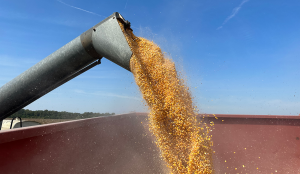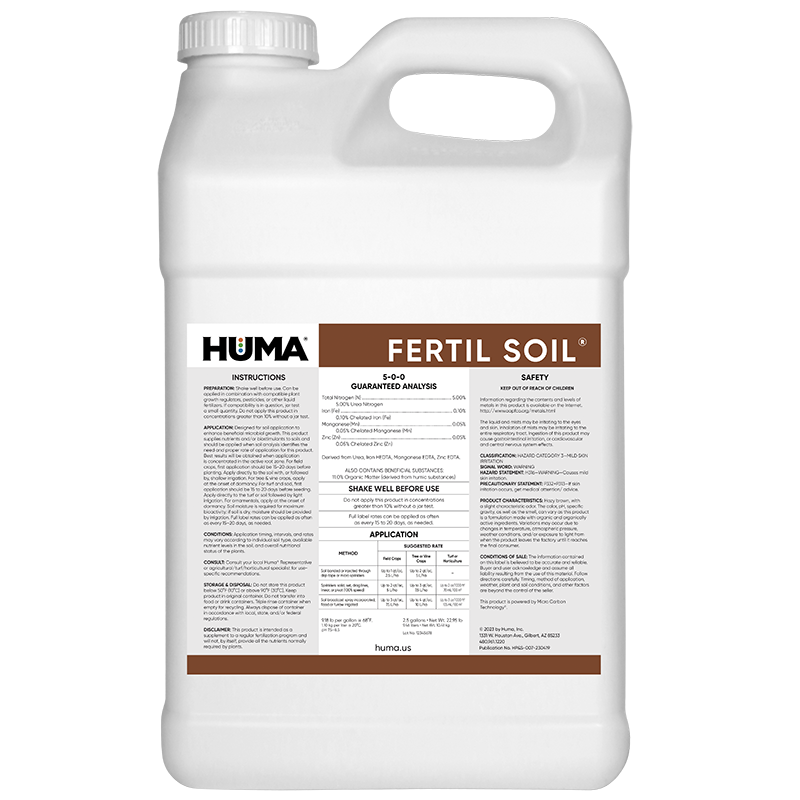Fertil Soil®
Benefits of Use:
- Activates beneficial aerobic bacteria and actinomycetes
- Aerates soils and flocculates clay particles
- Increases water-use efficiency
- Buffers salts in high alkaline, high salinity soils
- Increases nutrient availability for easier plant uptake
- Stimulates root-mass development
Deficiency Symptoms—When to Apply:
- Anaerobic soil conditions
- Low soil organic matter
- Soil compaction or cloddy, crusted soil
- Poor water penetration or retention
- Salt damage or toxicity to plants
- Loss of nutrients by leaching below root zone
- Inhibited root growth, small root mass
FAQs
Related Products
Related Case Studies

Huma® Fertil Soil® Increases Corn Yield With 260% ROI
Background Application of Fertil Soil® to soils in combination with other Huma® fertilizers at various locations previously resulted in crops with improved plant growth and higher yields. Applying Fertil Soil® with grower standard products or as a single product application to soil and leaves could also impact results. Objective The focus of this study was

Effects of Huma® Products on N & P Stabilization in Sandy Soil
Objective To demonstrate the effects of Huma® products X-Tend®, Fertil Humus®, Fertil Soil®, and Zap® on the reduction of nitrogen and phosphorus leaching in Immokalee sandy soils. Background The leaching of nitrogen and phosphate fertilizers presents an ongoing problem in Florida soils. Agricultural amendments that reduce leaching when applied to soils or when mixed with
Related Blog Posts

This Week in Ag #36
#Harvest23 is in full swing. You probably have a sense of what farmers are currently doing. But what are farmers currently thinking about? Well, at this time of the year… A LOT!

Microorganisms: The Living Engine of Soil—Part 2
In Part 2 of this series, we look at Plant-Microbial Interactions.

This Week In Ag #100
Farmers grow food. That’s a simple and straight-forward premise. Or is it? We continue to shake our heads at survey results that reveal many consumers think their food comes from the grocery store. But what about the industry itself? If we’re being totally honest, we should ask: are we largely focused on growing food, or producing commodities?






